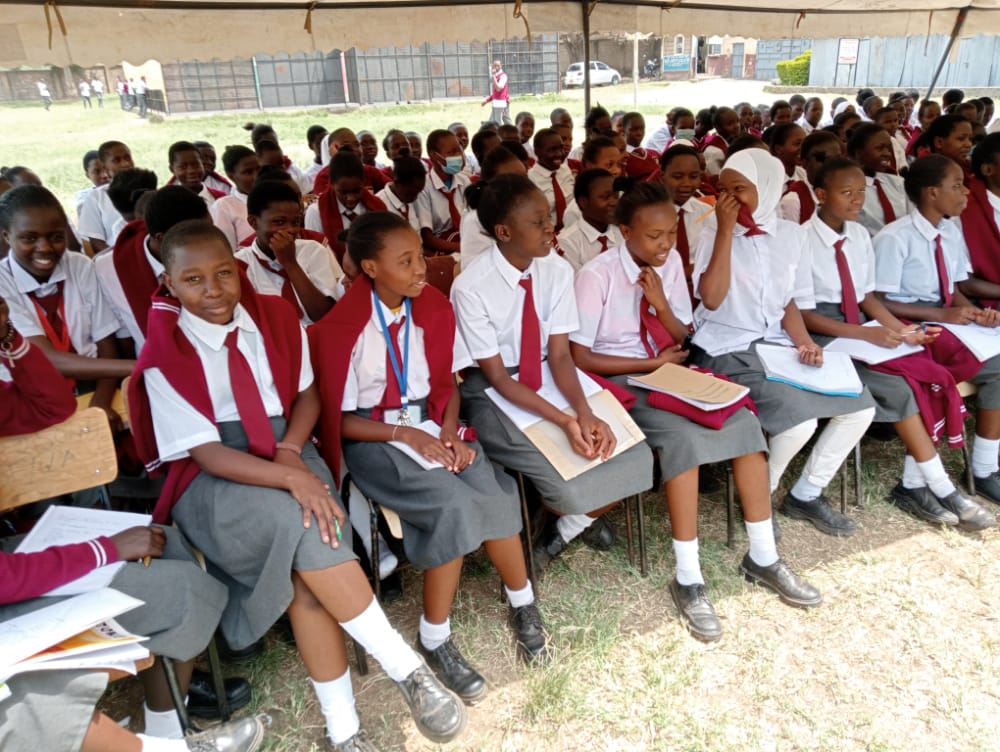How can we ensure that efforts to improve education for girls in Africa produce sustained, cumulative impact?
Factors related to the quality of learning in a school environment are interdependent and inter-related. All to often, then, individual interventions therefore only partially respond to the educational needs of learners.
For example, without a gender-responsive environment within schools where sexual harassment, bullying and teachers’ negative attitudes towards girls have been eliminated, the provision of bursaries does not necessarily enable girls to perform well and complete the education cycle.
Furthermore, the school experience tends not to prepare girls sufficiently for the challenges they will face in the outside world.
We believe that improvement of girls’ education in Africa requires a holistic approach that addresses the range of issues that continue to undermine the full participation of girls in education in the region.
Our experience shows that girls excel academically and are better equipped to overcome life challenges when they have teachers who are trained to meet their needs, learning materials that portray them in positive and equitable ways, a school environment that is welcoming and conducive to learning, and a community of adults who support them.
That is why we developed our gender-responsive school or Centre of Excellence (COE) model – to enhance girls’ academic and social development through quality education in a favourable learning environment.
“FAWE’s COE ensures that girls and boys become life-long learners with the capacity to be top academic and social achievers and confident and active members of society”, says FAWE Executive Director, Dr Codou Diaw.
Our COE model targets government schools in disadvantaged areas that demonstrate significant gender disparities. The programme started in 1999 in Rwanda, Kenya and Tanzania. The communities in which COEs were established in those countries were characterised by poverty, non-enrolment of girls beyond primary school, few schools at secondary level, early marriage of school-age girls, little community support for girls’ education, and, in Rwanda, a high of orphaned children due to the 1994 genocide.
Components of the COE model
The COE model uses targeted strategies to improve the learning environment. It places special focus on the unique circumstances affecting girls’ education in each particular country or region.
These strategies include:
- Gender-responsive school management training for head teachers, school board, PTA, and prefects. This ensures gender equality in the governance and operations of the school and addresses issues relating to the core curriculum and as well as to students’ co-curricula personal development.
- Gender-responsive pedagogy training for teachers. More…
- Science, Mathematics and Technology programme targeting girls. More…
- Bursaries for underprivileged girls and boys. More…
- Empowerment programmes for girls and boys. These programmes develop girls’ self-confidence, assertiveness, decision-making, problem-solving, negotiation and leadership qualities and enable them to overcome gender-based constraints to their education. They enable boys to de-link from gender oppressive attitudes and practices such as bullying and sexual affronts and to develop self-confidence to accept gender equality positively.
- Sexual maturation management programme. This programme targets both girls and boys to help them address sexual maturation issues, improve their reproductive health and protect themselves against sexually transmitted diseases, particularly HIV/AIDS.
- Guidance and counselling programmes. These programmes respond to various aspects of academic and social development and include mentoring, peer counselling and components that encourage girls to pursue equal career choices.
- Gender-responsive school infrastructure. This includes boarding facilities for girls with specific emphasis on adequate sanitation with separate toilet facilities for boys and girls, nutrition, sports and health facilities; science and computer laboratories, libraries and resource centres.
- Community involvement in school management and strong sensitization and mobilization programmes to gain active community support for improved enrolment, attendance and performance of girls.
- An effective monitoring system to track students’ performance and welfare as well as the levels of gender-responsiveness of all aspects of the school.
Outcomes of FAWE COEs
Since 1999, we have established 19 COEs in Burkina Faso, Chad, Gambia, Guinea, Kenya, Namibia, Rwanda and Tanzania. In 2008 and 2009, we began the process to transform a further eight government schools into COEs in Benin, Comoros, Madagascar, Swaziland, Togo, Uganda, Zambia and Zanzibar.
The results from our established COEs have been real and positive. They include
- Increased rates of enrolment, retention, completion of school for girls
- Improved academic performance and achievement for girls
- Greater participation by girls in classroom processes.
- Higher retention rates.
- More girls in school committees and leadership roles.
- Reduction in teenage pregnancies.
- Higher gender awareness among boys in mixed COEs.
Over 6,500 girls and boys have benefited from FAWE’s COEs since their inception.
“One of FAWE’s strategies for the coming years is to advocate for the replication and mainstreaming of its Centre of Excellence,” says Dr Diaw.
This will ensure that more girls and boys in sub-Saharan African benefit from a quality education targeted to meet their specific needs.





Leave A Comment